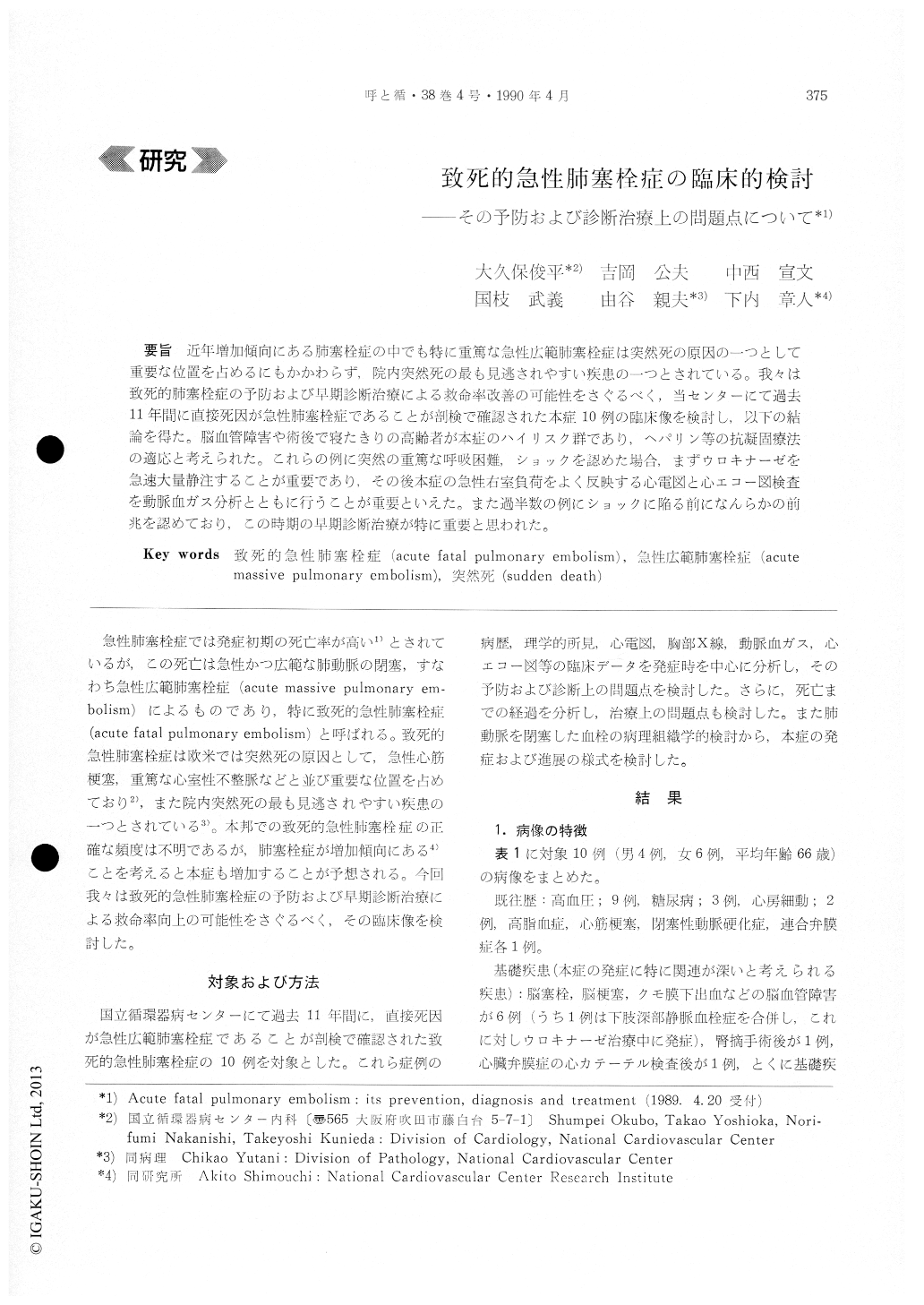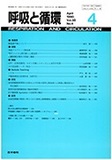Japanese
English
- 有料閲覧
- Abstract 文献概要
- 1ページ目 Look Inside
近年増加傾向にある肺塞栓症の中でも特に重篤な急性広範肺塞栓症は突然死の原因の一つとして重要な位置を占めるにもかかわらず,院内突然死の最も見逃されやすい疾患の一つとされている。我々は致死的肺塞栓症の予防および早期診断治療による救命率改善の可能性をさぐるべく,当センターにて過去11年間に直接死因が急性肺塞栓症であることが剖検で確認された本症10例の臨床像を検討し,以下の結論を得た。脳血管障害や術後で寝たきりの高齢者が本症のハイリスク群であり,ヘパリン等の抗凝固療法の適応と考えられた。これらの例に突然の重篤な呼吸因難,ショックを認めた場合,まずウロキナーゼを急速大量静注することが重要であり,その後本症の急性右室負荷をよく反映する心電図と心エコー図検査を動脈血ガス分析とともに行うことが重要といえた。また過半数の例にショックに陥る前になんらかの前兆を認めており,この時期の早期診断治療が特に重要と思われた。
Acute fatal pulmonary embolism is one cause of sudden death which should be guarded against. It is the most often missed diagnosis in sudden death cases within the hospital. Clinical pictures of 10 pa-tients with acute fatal pulmonary embolism proved by autopsy were examined to elucidate the problems of diagnosis, and to look for an effective treatment, and a method of prevention. Common risk factors were old age and immobility due to stroke or post-operative state. Common past histories were hyper-tension, diabetes mellitus, obesity, atrial fibrillation and hyperlipidemia. Electrocardiogram and echocar-diogram showed that in these patients there was de-finite evidence of acute right ventricular overload. High doses of intravenous urokinase should be given whenever acute cardiovascular collapse develops in such high risk patients. Emergent pulmonary angio-gram and pulmonary embolectomy could be life-sav-ing in patients with acute massive pulmonary embo-lism. Prevention is, however, the best treatment. In addition to anticoagulation medication, frequent change of body position and early mobilization are important precautions to prevent fatal pulmonary embolism developing in such patients.

Copyright © 1990, Igaku-Shoin Ltd. All rights reserved.


